Saturday, July 26,2025. Annette’s Roundup for Democracy.
The Trump cult has long believed America has been run by Liberal child traffickers.
Remember Pizzagate.
Yesterday, the New York Times ran an article which summarized the importance of this conspiracy theory to the Right.
Keep remembering how engrained this madness is in Right Wing ideology, and you will understand why they won’t stop demanding the Epstein files.
NYTimes: The Conservative Crusade That’s About So Much More Than Epstein
The long history of the right’s obsession with child trafficking means it won’t be easy for Trump to make this story disappear.
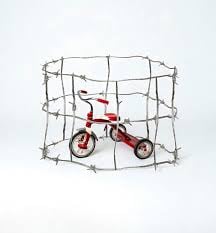
There is no cause on the American right quite like the quest to save children from sex abuse.
The harming of children is at the center of Pizzagate, the wholly fake theory that began circulating around the 2016 election that Hillary Clinton was running a child sex-trafficking ring out of the basement of a Washington, D.C., pizza parlor. It’s the ultimate sin in the tales spun by QAnon followers, who believe that millions of children are going missing, their bodies harvested for a drug enjoyed by elites.
The obsession can be found closer to the mainstream, too. Conservative activists have stoked fears that transgender adults are “grooming” children for abuse. In the summer of 2023, the movie “The Sound of Freedom,” a thriller about a swaggering federal agent who rescues children from sex trafficking, was an unexpected blockbuster, powered by loyal conservative fans.
And now the great MAGA meltdown over Jeffrey Epstein.
Unlike QAnon or Pizzagate, Mr. Epstein’s abuse of minors has been proved in a court of law. Theories about his connections to powerful figures and the records of his crimes have been fodder for right-wing media for years. Now, Mr. Trump’s insistence that the whole thing is a “hoax” is being met with disbelieving anger from the MAGA base. Polling shows that the issue is the rare case where Trump supporters break from the president.
“Mr. President- Yes, we still care about Epstein,” the actress Roseanne Barr recently posted on X in a fit of frustration over the Justice Department’s reluctance to release more Epstein documents. “Is there a time to not care about child sex trafficking? Read the damn room.”

A billboard in Times Square this week calls for the release of the Epstein files.
“It’s a binary decision to stick to your guns and to say that we should not have any safe haven for child predators,” said the right-wing provocateur Benny Johnson on a recent episode of his podcast. And if you are enabling a child predator, he added, “then you deserve to have your life destroyed, and it’s something that we’re not going to back down on.”
So far, the only people retreating are Republican leaders terrified of the rebellion coming from inside the party. “Dangling bits of red meat no longer satisfies,” Representative Marjorie Taylor Greene, Republican of Georgia, warned on X this week. “They want the whole steak dinner.” The next day, Speaker Mike Johnson wrapped up the House session early to avoid holding votes on the Epstein case.
But why is the Republican base so fixated on the issue of child sex abuse — whether the accused is a real New York financier or an imagined cabal working in the basement of a pizza parlor?
Historians have noticed a pattern across centuries of American life: When the role of women in society changes, a moral panic about children soon follows. Concern about children tends to surge not with evidence of increasing harm, but with broader cultural currents. Children become repositories for our anxieties about changes we cannot control and an uncertain future.
It was the political left that more than 100 years ago first named the problem of child sex abuse, but conservatives have now spent so long commandeering the issue to project their own morality that it has become a centerpiece of their worldview. They use it to turn their enemies into the ultimate monsters.
An Indisputable Moral Cause
Panics around protecting children have left a profound legacy in America. Child labor laws, anti-trafficking laws and, to some extent, even the concept of childhood itself, have all been products of these panics.
The first frenzy arrived in America in response to industrialization, which exploded American households. Through much of the 19th century, mothers, fathers and children worked together at home to produce what they needed to survive, while many specialty trades — blacksmithing, carpentry — were family endeavors. Children were largely valued for what they could contribute to their households, according to the sociologist Viviana A. Zelizer in her influential history, “Pricing the Priceless Child.”
But with the rise of factories and high finance, men began leaving their homes for jobs in the city that paid wages, while women stayed home. Domestic life was elevated to its own separate plane. And children became a political concern. Christian feminists rallied support to make children a highly protected class, innocent creatures who were no longer expected to produce much of anything.
An indisputable moral cause was born. Now that children were synonymous with innocence, their protection would also become a crusade, to be used for pure as well as cynical ends.
“At the turn of the 20th century, you have a much more organized feminist movement. Women are very active. They’re very concerned about getting the vote. They’re also worried about the rights of ordinary women, and they soon find that ordinary girls are very much exposed to maltreatment,” said Philip Jenkins, a professor of history at Baylor University. “There’s a whole sexual abuse discovery.”
The abuse of children was real and tolerated by the law. As feminist activists uncovered child prostitution rings in American cities, they successfully fought to raise the age of consent in much of the country, which hovered at 12, with some states going even lower, including Delaware, where it was 7. Feminists fought to raise the age closer to 16.
But social reformers and newspapers also stoked a frenzy with false and lurid stories of sex trafficking of children by immigrants, claiming that girls were being kidnapped off streets and sold into prostitution by powerful syndicates. The mania over “white slavery,” as it was called, led to the passage of the country’s first federal anti-trafficking law, the Mann Act, which banned the transport of women across state lines “for the purpose of prostitution or debauchery, or for any other immoral purpose.” (The law remains in heavy rotation, most recently during the Sean Combs trial when it became the source of the only convictions prosecutors were able to eke out of the jury.)
The Great Depression and World War II ushered in another era of domestic upheaval, with a decade of male job insecurity ending with the introduction of more than six million women into the wartime workforce. For the first and only time, the federal government opened publicly funded day care centers.
As if on cue, America became consumed by another sex panic. J. Edgar Hoover, the F.B.I. director and master of the art of personal sabotage, seized on headlines about child abductions to wage a war against sex offenders that doubled as a homophobic purge of American life.
More tinder for political reaction was to come. In 1961, about 37 percent of women worked. By 1980, it was more than half. For the second time within a century, the structure of the typical American household was undergoing a major transformation. A new generation of feminists saw this as progress. Christian conservatives, however, found it horrifying that women with young children were hiring day cares to watch their infants and toddlers while they worked.
The sex abuse panic that followed in the 1980s would dwarf those that came before. It became a mainstream cultural phenomenon, amplified by not just evangelical Christians but anti-pornography feminists and outsize television personalities, including Oprah Winfrey. It also almost entirely broke with reality.
Later called the satanic panic, a slate of sketchy reports surfaced across the country that day care centers were employing members of secretive satanic cults who abused children. In the most infamous case, hundreds of children at a preschool in Manhattan Beach in Southern California claimed that they were being abused during satanic rites, leading to one of the longest and most expensive trials in American history. That case and many others collapsed after it became clear that young children were being coerced into giving false testimony by well-meaning adults eager to prove their fearful hunches. Still, hundreds of Americans, many of them gay, had their lives destroyed by these false accusations.
When Reality Breaks
More recent conspiracy theories like Pizzagate and then QAnon can be understood as revivals of the satanic panic. During the Covid-19 pandemic, these fringe theories morphed into a mass movement, just as the American household experienced another shock to the system.
With children thrust into remote learning and day cares shut down, about 20 million women exited the work force, often to fill the child-care gap. White-collar workers were allowed to work out of their homes. With so many mothers, fathers and children all back in the home, it was as if the clock had briefly turned back to the preindustrial 19th century.
During that time of isolation, fear and doomscrolling, many Americans became lost in the maze of QAnon. The most visible extremists may have been men, but the QAnon rank-and-file contains millions of otherwise ordinary women of every class, drawn by the cause of protecting children. Women motivated by QAnon were present at the Jan. 6 riot, including two who died. And a project at the University of Maryland to track radicalization by QAnon found that 83 percent of the women who had committed crimes in the name of the conspiracy theory had children who had been abused by a romantic partner or family member.
The QAnon movement doesn’t draw adherents online the way it once did. But that almost doesn’t matter. The story that always meant the most to the followers was that Mr. Trump was the only one who could save the world from an elite cabal of satanic pedophiles. And that tale has retained every bit of its power as it feeds directly into the Epstein frenzy.
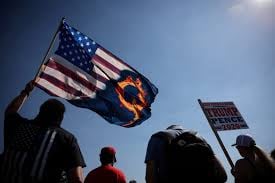
Many Trump supporters have been taken by the QAnon conspiracy theory
Experts on conspiracy theories often point out that people break with reality when reality breaks with them. The country has witnessed an undeniable drumbeat of sex abuse scandals at the highest levels of American society, from the Roman Catholic Church to Bill Clinton to Bill Cosby and Harvey Weinstein to Mr. Combs and Mr. Epstein. Besides, some of the most disillusioned people in America are mothers charged with protecting their children, but who see all around them examples of elite misconduct that the government has not constrained.
Mothers especially have been open to conspiracy theories because of how much they feel pressure to keep their children safe, argue Mia Bloom and Sophia Moskalenko in “Pastels and Pedophiles: Inside the Mind of QAnon.” These mothers quickly learn that it’s impossible. Dangerous levels of lead and arsenic have been discovered in baby formula, all of it missed by regulators. Microplastics are found in the air and water, and even run-of-the-mill vegetables are grown with toxic fertilizer from sewers. For plenty of mothers, this means confronting threats to their children in the most mundane of places, the aisles of a grocery store. What else might be hidden?
There is no evidence of a rising tide of sexual violence against children, but the threats to children’s safety in American life are real and pervasive. Jonathan Haidt’s book about the perils of social media has been sitting on The New York Times best-seller list for months, telling parents that powerful companies cannot be trusted to protect their children online. Active-shooter drills begin in preschool. The people most likely to object to cellphone bans in schools are often parents who want to closely track their children at all times.
Riding directly off the paranoia and popularity of QAnon, the Epstein case represents the apex of all that has come before. And it introduces a new element. With an all-too-real cast of powerful men, the Epstein story combines the American tradition of sex panics with modern disgust with those in power. The fury of the American public has been building for decades, piling up a list of elite crimes like the wars in Iraq and Afghanistan, the bank bailouts of the financial crisis and a broken health care system. It’s no wonder, then, that the Epstein obsession does not seem to have an off switch.(New York Times).
Manu Raju, CNN chief congressional correspondent, said this.

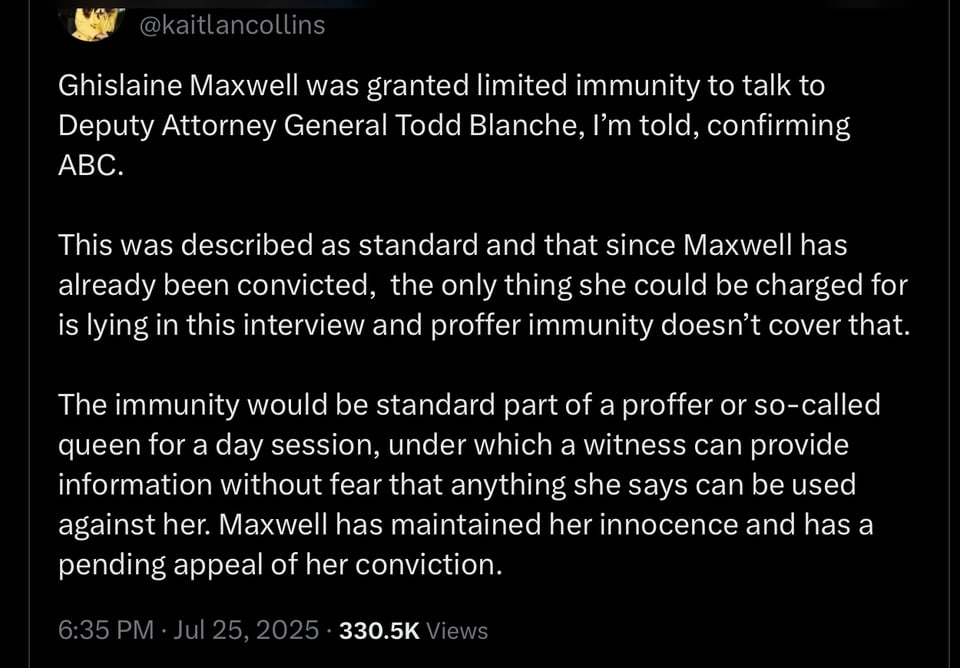
Wondering about the Trump-Japan deal which received so much coverage?
Worry no more. It is a mirage.
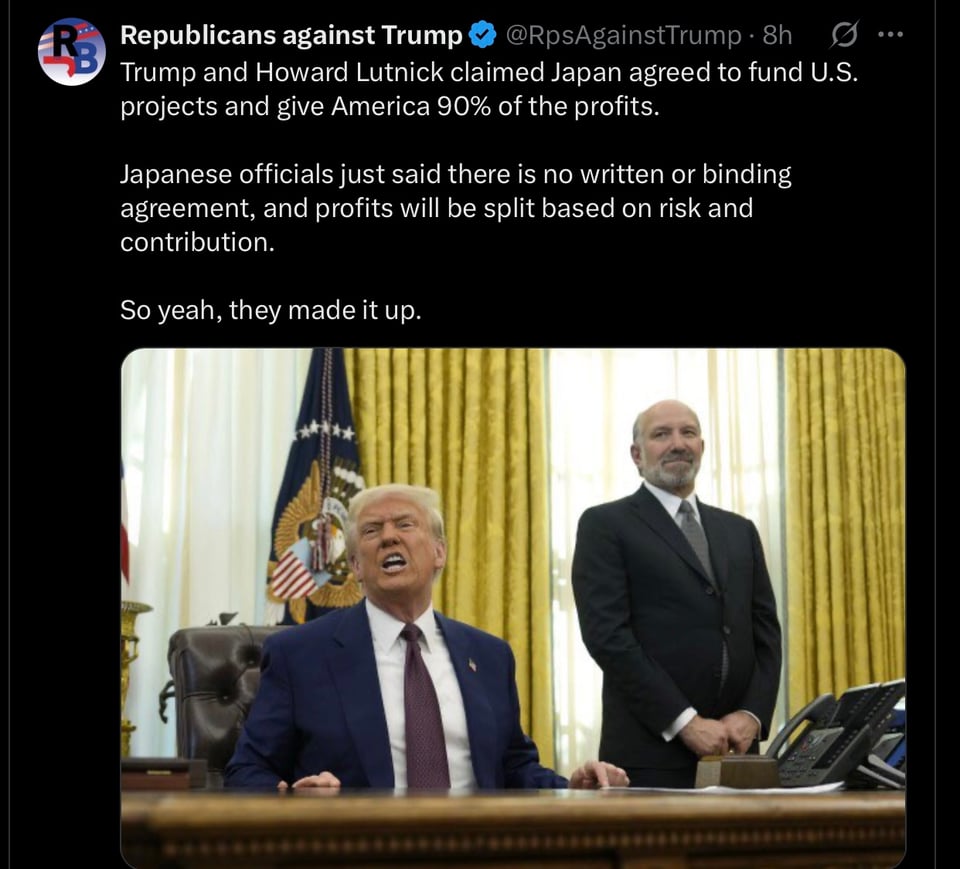
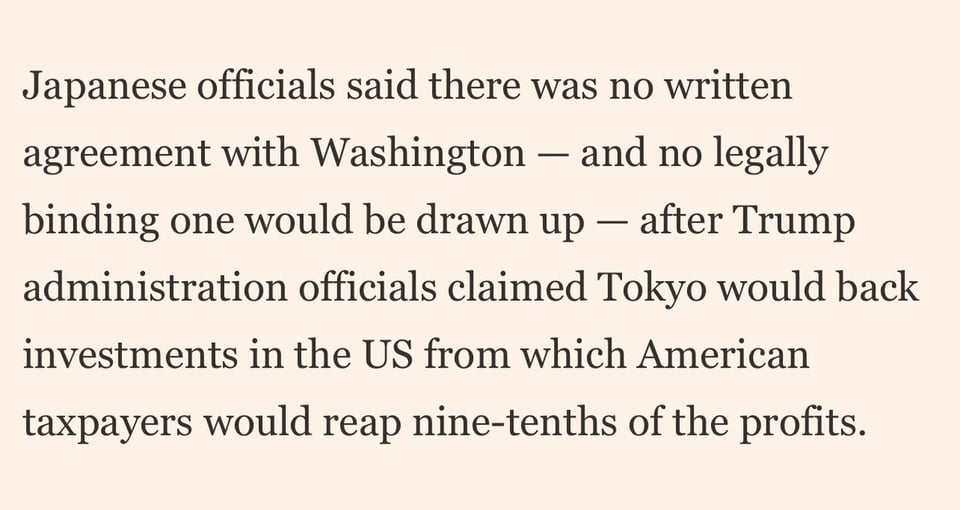
Trump’s extortion is happening right before our eyes.
Columbia Settlement Offers a Warning for Higher Ed
The $221 million settlement extends beyond tackling antisemitism. Some experts said it’s an example of “coercion,” while others say Columbia had it coming.
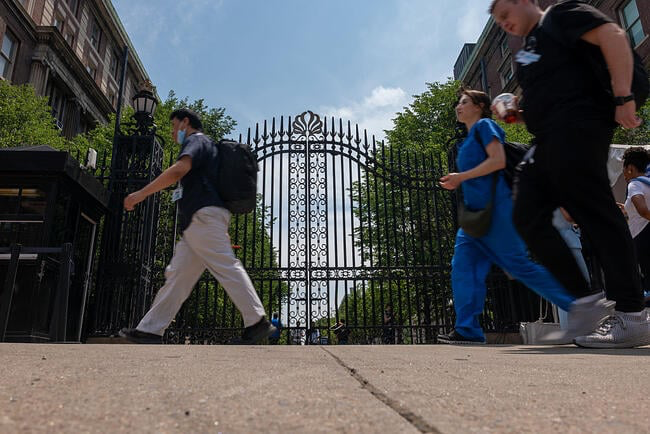
Columbia University was an epicenter for pro-Palestinian protests in the spring of 2024.
The Trump administration’s landmark settlement with Columbia University threatens the institution’s independence and academic freedom, higher education experts say. Many warn that the agreement marks a threat not only to higher education, but also to democracy at large.
The agreement, announced Wednesday, comes after Columbia faced months of intense pressure from the White House to address alleged antisemitism on campus and agree to a number of demands. It’s the latest example of how this administration is pushing the boundaries of its authority to secure changes that conservatives have long sought in higher ed.
In the end, Columbia agreed to comply with the government’s extensive demands while forking over more than $200 million to unlock $400 million in federal grants.
Education Secretary Linda McMahon celebrated the long-anticipated deal as an example of “commonsense reform,” saying in a statement that Americans have “watched in horror” for decades as the most esteemed campuses were occupied by “anti-western teachings and a leftist groupthink.”
“Columbia’s reforms are a roadmap for elite universities that wish to regain the confidence of the American public by renewing their commitment to truth-seeking, merit and civil debate,” she added. “I believe they will ripple across the higher education sector and change the course of campus culture for years to come.”
But some higher education faculty, legal experts and free speech advocates say the settlement is unlawful, pointing to the quick investigation, vague allegations and unprecedented way federal funds were retracted before Columbia had a chance to appeal. Some went as far as to compare the executive actions to past power grabs by authoritarian leaders in countries like Hungary, Turkey and Brazil.
“The very real danger is that if elite institutions choose to submit to the authority of the Trump administration, the whole rest of the industry will follow.”
Kevin Carey, vice president of education and work at New America
Columbia’s capitulation “represents the upending of a decades-long partnership between the government and higher education in which colleges and universities nevertheless retained academic freedom, institutional autonomy and shared governance,” said Lynn Pasquerella, president of the American Association of Colleges and Universities. “It signals a rise in authoritarian populism in which higher education is positioned as the enemy in a fight against corrupt, inefficient and elite institutions that are out of touch with the needs of the working class.”
A federal taskforce convened to combat antisemitism first presented the university with the sweeping list of demands in March. The decision was simple: comply or permanently lose the federal funds that were frozen a week prior. The Ivy League institution agreed a week later to nearly all of the president’s demands. But the funds remained frozen.
Though Columbia was on the “right track,” McMahon and other task force members said the university had a long way to go. While talks with Columbia continued, the task force turned its focus to Harvard University and made similar demands. The Crimson, however, rejected the task force’s mandates and sued after it froze more than $2.7 billion in federal funds.
Many higher education leaders say that Columbia had a choice and chickened out. But regardless, they add, Trump’s ultimatum amounted to extortion.
Whether you applaud or despise the terms of the deal, the way in which the government is operating, and getting universities like Columbia to make these deals is fundamentally coercive,” said David Pozen, a constitutional law professor at Columbia. “Therefore, it poses a significant threat to the future of higher education as well as the rule of law.”
Pozen and others fear that this will only further embolden Trump to take similar strikes at more institutions.
“The very real danger is that if elite institutions choose to submit to the authority of the Trump administration, the whole rest of the industry will follow,” said Kevin Carey, vice president of education and work at New America, a left-leaning think tank. “It will be like a stack of dominoes one falling after the other.”
Chilling First Amendment Rights
The Trump administration has said the measures taken against Columbia were necessary to address antisemitism on the campus as officials accused the university of failing to protect Jewish students and later said Columbia violated federal civil rights law.
As part of the settlement, Columbia is paying $21 million to address allegations that Jewish employees faced discrimination. The agreement also requires the university to hire a student liaison to support Jewish students.
But the settlement goes beyond antisemitism and focuses on unrelated campus policies. For example, starting in paragraph 16, the administration says that Columbia students cannot reference race in admissions essays and mandates that the university must provide annual data showing both rejected and admitted students broken down by racial demographics, grade point averages and test scores.
”When campuses like Columbia and Harvard allowed antisemitism to run amok, the consequences were going to follow. The chickens had come home to roost.”
Frederick Hess, director of education policy studies at the American Enterprise Institute
The settlement also requires similar data concerning the admission of international students, bans the participation of transgender women in female sports and calls for Columbia to establish a process to ensure that all students “are committed to the longstanding traditions of American universities, including civil discourse, free inquiry, open debate, and the fundamental values of equality and respect.”
In Carey’s view, by buckling to the Trump administration, Columbia surrendered its identity as a private institution—and so would any other university that follows suit.
“The essence of an independent university is deciding who is part of your academic community, and Columbia University has surrendered that,” he said, referring to the admissions provisions.
Will Creeley, legal director of the Foundation for Individual Rights and Expression, said that, in addition to admission practices, this settlement and its “blatant disregard for federal law” will upend academia’s core commitment to fostering First Amendment rights.
“The reforms themselves require Columbia students to commit to laudable values like free inquiry and open debate,” Creeley wrote in an email to Inside Higher Ed. “But demanding students commit to vague goals like ‘equality and respect’ leaves far too much room for abuse, just like the civility oaths, DEI statements, and other types of compelled speech FIRE has long opposed.”
Michael Thaddeus, a Columbia math professor and president of the faculty union chapter, said though administrators insist they won’t allow the government to interfere, that assurance doesn’t mean such acts won’t occur.
“Students and scholars at American universities must be free to think and speak their minds,” he wrote in a statement to Inside Higher Ed. “The settlement … risks imperiling this freedom.”
Ditching Due Process
Beyond the terms of the settlement itself, education advocates are primarily concerned with the process used to reach the agreement, which they said didn’t follow procedural norms.
Pozen, the Columbia law professor, outlined in a blog post Wednesday night how the task force bypassed nearly all statutory requirements of such an investigation.
This administration must return to following the rule of law.”
Ted Mitchell, president of the American Council on Education
Past administrations, Pozen explained, have pushed the boundaries of regulation, utilizing more guidance letters and fewer formal rule-making sessions with public comment. But even those enforcement strategies consisted of policies that applied to all institutions and were based on thorough investigations, not rushed accusations, he added.
“The means being used to push through these reforms are as unprincipled as they are unprecedented,” Pozen wrote. “Higher education policy in the United States is now being developed through ad hoc deals, a mode of regulation that is not only inimical to the ideal of the university as a site of critical thinking but also corrosive to the democratic order and to law itself.”
Conservative higher education experts who support the administration’s approach acknowledged that it lacked due process, but also argued that Columbia deserved the stipulations and financial penalty it faced.
“When campuses like Columbia and Harvard allowed antisemitism to run amok, the consequences were going to follow,” said Frederick Hess, director of education policy studies at the American Enterprise Institute, a right-leaning think tank. “The chickens had come home to roost.”
Hess added that the Trump administration was not the first to “short circuit” regulatory processes, citing the Biden administration’s loan forgiveness campaign and Obama’s use of the gender equity law, Title IX, to combat sexual assault as examples.
“We live in a time when concern for legal requirements and norms is increasingly dismissed across the political spectrum,” so to chastise one administration for skipping steps and not the other is problematic, he said. “I continue to be deeply troubled every time [the procedural statutes] are broken. But you cannot have asymmetrical expectations for the parties in these kinds of debates.”
Shifting the Political Paradigm
While a few figures, including former Harvard president and treasury secretary Lawrence Summers, applauded the resolution, many faculty members and higher education leaders expressed fear that their institutions could be next.
”Columbia’s reforms are a roadmap for elite universities that wish to regain the confidence of the American public by renewing their commitment to truth-seeking, merit and civil debate.”
Education Secretary Linda McMahon
Kirsten Weld, a history professor and president of the Harvard faculty union chapter, said she is “very concerned” and rejects any suggestion that Columbia’s settlement should be a “blueprint” for her own institution’s negotiations.
“This is about deploying the coercive power of the federal government to dictate to universities, faculty, and students what they should teach, research, and learn, on ideological grounds,” she wrote in an email to Inside Higher Ed. “It is a dangerous abuse of federal regulatory and civil rights enforcement authority to obtain … what it would otherwise be unable to mandate through proper legislative channels.”
Ted Mitchell, president of the American Council on Education, also suggested via email that “this cannot be a template for the government’s approach to American higher education.”
This administration “reached a conclusion before an investigation and levied a penalty without affording Columbia due process—that is chilling,” he wrote. “This administration must return to following the rule of law.”
But many policy experts are doubtful that will happen any time soon.
When looking beyond just Harvard and Columbia, one thing becomes clear, said Dominique Baker, an associate professor of education and public policy at the University of Delaware, the president is inciting an “outright attack” on higher education, and he has no plans of slowing down.
From the political ousting of University of Virginia president James Ryan to the legislative termination of countless academic programs in Indiana with little to no faculty input, Baker identified one defining thread: curtailing the power of democratic institutions.
“We are in a very dangerous time, both for U.S. higher education, but more importantly for our country,” she explained. “These types of outright attacks on colleges and universities are typically the moves of autocrats and dictators, often seen as signs of authoritarian takeovers.”
She later added, “if one wanted to overthrow our constitutional republic, these are the types of moves you would make.” (Inside Higher Ed)
Harvey Fierstein: Actor, Playwright and Quilter- Playbill
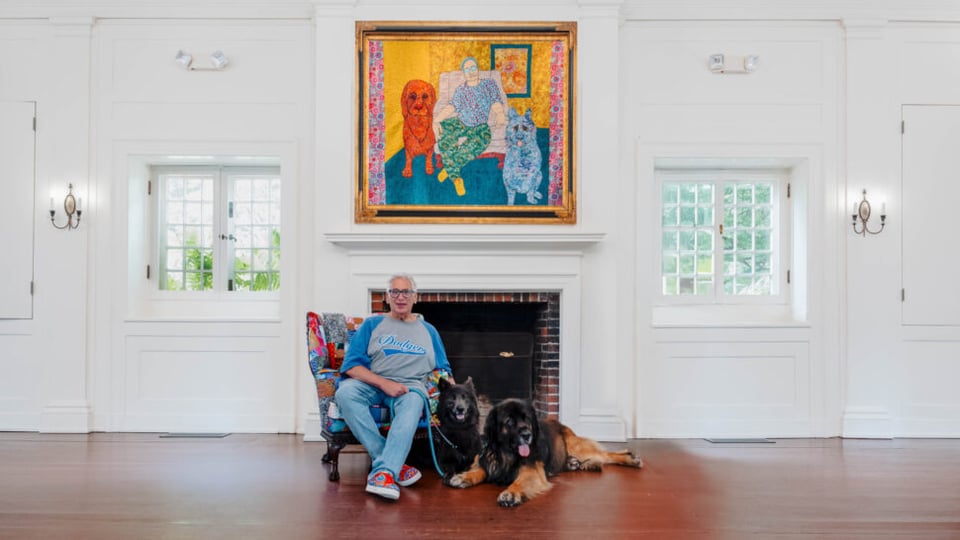
Harvey Fierstein is an Artist—capital A—to put it mildly. In his long and storied Broadway career, he’s won four Tony Awards, two as an actor (for Torch Song Trilogy and Hairspray) and two as a writer (for Torch Song Trilogy and La Cage Aux Folles).
Then this past June, the living Broadway legend was honored with a Lifetime Achievement Tony Award. And while accepting the accolade onstage at Radio City Music Hall, Fierstein hinted at the larger breadth of his artistry. “This has all happened by accident,” he said in his speech. “See, if it had gone to plan, I should now be a retired high school art teacher.”
Yes, reader, theatre is actually just the other thing Harvey Fierstein does. You know, when he finds the time. He’s been making art—drawing, painting, sculpting—since childhood, and as he said in his Tony speech, had thought he’d devote his life to teaching kids to do the same. Becoming a household name and beloved entertainer was never the plan.
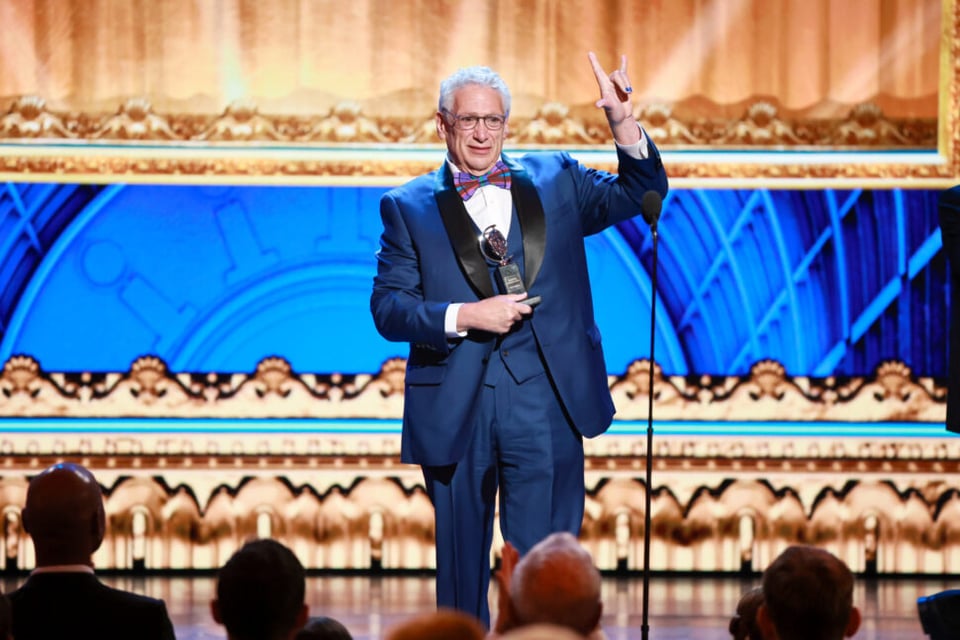
And now, in his hometown of Ridgefield, Connecticut, a different facet of Fierstein’s artistry is on exhibition, at Keeler Tavern Museum. A new show, open to the public July 25-27, is putting Fierstein’s quilts front and center. Yes, you may know Fierstein best for his plays and legendary stage performances, but Fierstein can also sew a mean quarter-inch seam.
But how did Fierstein go from visual art to theatre to sewing? That’s all part of the legend's unique outlook on life: “It’s easy to say no, because you’re scared. But I’ve always been a ‘sure, whatever. Why not,’” Fierstein tells me, walking through the Keeler Tavern Museum as docents ready his quilt exhibition. Fierstein was surveying the work, accompanied by his two comically large dogs, BoBo and Charlie.
But that "why not" sentiment, Fierstein says, makes it so one’s life is never a tidy, straight line [insert obligatory gay joke here].

Harvey Fierstein and Logan Culwell-Block
That same outlook is what landed Fierstein in the theatre, too. A friend’s mother started a community theatre and needed someone to make posters. Enter the young Fierstein, who ended up finding his people there. Before he knew it, they had him acting, too. And that’s why it didn’t seem like such a crazy idea to head to an open audition at experimental theatre company La MaMa. He was actually there because he wanted to meet his art idol, Andy Warhol, who was holding calls for what would become his sole stage play, Pork. Fierstein ended up being cast, and Warhol thought to get him in drag—the beginning of another lifelong facet of Fierstein’s art. And La MaMa would end up being where Fierstein cut his teeth in the professional theatre, presenting the earliest versions of what would become his career-making Torch Song Trilogy.
The quilting, Fierstein says, is an extension of his visual art. In fact, he says the writing and the acting really is, too—he doesn’t think of them as separate things. He got into quilting via a TV show on ‘90s-era HGTV (“before they became 24/7 real estate porn,” he says, rolling his eyes). It seemed like something that would be fun to learn, and once he did, he was hooked.
But just as Fierstein’s theatrical output has been anything but ordinary, his quilts are not exactly what you expect to see on your grandmother’s loveseat. Fierstein’s lifelong eye for color has made him a big fan—not to mention personal friend—of fabric designer Kaffe Fassett, who works almost exclusively in vibrant, sometimes unusual color pairings. Fierstein started his quilting journey making what’s known as “crazy quilts,” which eschew the more traditional, symmetrical block patterns for irregular, almost improvisatory fabric shapes.
Just as Fierstein found community in theatre, he found community in quilting. Even though it involves heavy machinery, it tends to be a uniquely communal experience, whether it’s meeting fellow quilters at the local quilt shop or holding “stitch and bitch” sessions, as Fierstein calls them. His particular journey ended up leading him to Erin Byrne, a former advertising CEO who runs Cotton Candy Fabrics, a quilt shop in Brookfield, Connecticut.
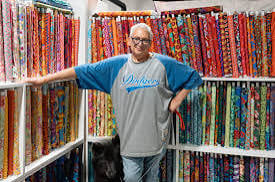
Byrne says making quilty friends is one of the best parts about getting into the craft. “You can go to any quilt shop and have a conversation with anyone that you’ve never met before,” she says. “You all speak the same language, when you all have the same mindset about community, and giving a piece of yourself with the things that you make.”
The two started out as friends, but before long, Byrne had Fierstein at Cotton Candy learning to use a longarm, a large and specialized sewing machine made specifically for the quilting process. Fun fact: When most people talk about quilting, they’re actually describing piecing a quilt top. The actual quilting comes in when the quilt top, batting, and quilt backing (collectively the “quilt sandwich”) get sewn together.
Like many quilters, Fierstein had been sending his quilts out to be quilted by other people—it’s a difficult process to do on a regular home sewing machine. Learning to longarm—which involves stretching your three quilt layers out on a large frame that stays stationary as the sewing machine moves, the opposite of how a normal machine works—is what kicked Fierstein’s quilting artistry up a notch.
“Suddenly he had the technique, the know-how, but also the artistry, the eye for color—and his brain for storytelling,” Byrne says. “It all came together and added up into something on a whole other level.”
And that’s why Fierstein’s quilts, a craft he started doing with ladies at his local quilt shop, are now hanging on the exhibition walls of the Keeler Tavern Museum. His work is, within the world of quilting, uniquely artistic, the fabric becoming the canvas, the thread his paint. These days, he tells us, he tends to construct a background, either by piecing various fabric pieces together crazy-quilt style or just large pieces of fabric. Then he’ll turn drawings into appliqué templates, cutting his shapes out of fabric and sewing them on top of the background layer. And, he says, he always lets the piece itself tell him what it wants to be. If he's unhappy with a quilt, it just means it’s not finished yet.
He also likes to continually learn new techniques, new skills to put in his proverbial quilting toolbox. “Every quilt has to be completely different, or have at least one technique that I’ve never tried before,” he says. His most recent addition is couching, a method of sewing yarn onto fabric. The result is almost like he’s drawn on his quilts with a 3D yarn pen, outlining his shapes.
That same outlook is what landed Fierstein in the theatre, too. A friend’s mother started a community theatre and needed someone to make posters. Enter the young Fierstein, who ended up finding his people there. Before he knew it, they had him acting, too. And that’s why it didn’t seem like such a crazy idea to head to an open audition at experimental theatre company La MaMa. He was actually there because he wanted to meet his art idol, Andy Warhol, who was holding calls for what would become his sole stage play, Pork. Fierstein ended up being cast, and Warhol thought to get him in drag—the beginning of another lifelong facet of Fierstein’s art. And La MaMa would end up being where Fierstein cut his teeth in the professional theatre, presenting the earliest versions of what would become his career-making Torch Song Trilogy.
The quilting, Fierstein says, is an extension of his visual art. In fact, he says the writing and the acting really is, too—he doesn’t think of them as separate things. He got into quilting via a TV show on ‘90s-era HGTV (“before they became 24/7 real estate porn,” he says, rolling his eyes). It seemed like something that would be fun to learn, and once he did, he was hooked.
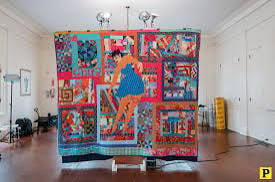
Fierstein's quilt dedicated to late Tony-winning Broadway actor Gavin Creel.
Perhaps unsurprisingly, Fierstein is no stranger to combining his theatrical and quilting lives, something that is on display at Keeler. Amongst the quilts in the exhibition are pieces dedicated to two of his late friends and stage colleagues, Gavin Creel and Chita Rivera. Both quilts, he says, were his way of processing his grief. “When somebody you know, you love dies… and Gavin was so young, and nobody knew. Well, I didn’t know he was sick, until the end,” he shares. “What do you do with those feelings? Gavin’s gone, but we’re left with all these feelings.” Making a quilt, he says, is so personal. “It’s you and the machine. There is nothing more meditative.”
Creel’s quilt feels like it lives on two planes. Its background is colorful, vibrant Kaffe Fassett fabric—characteristic of Fierstein’s other quilts. The foreground is somber figures in solid black: Creel, kneeling and with his back turned; Fierstein and his dog, BoBo, reaching out. “Isn’t that Gavin?” he remarks. “Gavin was life. Gavin was laughter. And he was very sexy, a wild energy. That’s him. [The somber figure in the quilt] wasn’t him. When you get sick, that becomes you. It became me and BoBo reaching out to Gavin, saying ‘Come to us. Why didn’t you tell me?’”
Fierstein is auctioning the quilt off, with proceeds to go to Celia Keenan-Bolger and Sara Bareilles’ newly founded Gavin Creel Fellowship, an initiative that will provide $25,000 grants to emerging theatre actors. (Playbill)

See you Tuesday.